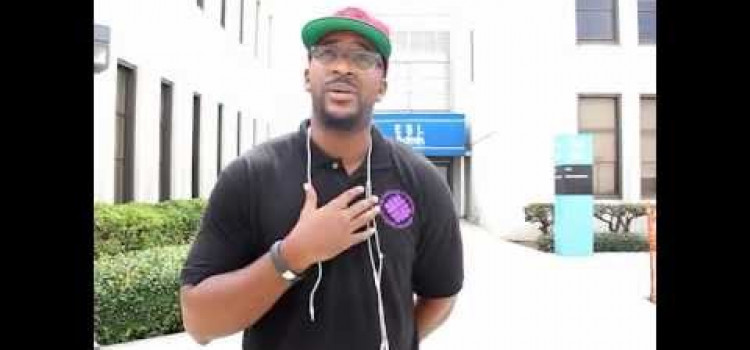

Reid High School Dean Melanie Webb was interrupted on Wednesday by an irate senior named Nickia Veasley. Nickia left her class without permission to speak with school administrators and resolve a conflict.
Veasley plopped down in front of Dean Webb, declaring, “Mz. Webb I need a circle! Because this teacher is disrespecting me and won’t let me do my work.”
Nickia was practicing restorative justice. Reid Continutation High School is the only institution in Long Beach that practices restorative justice, a model of conflict management that focuses on the harm done to people, and seeks to repair that damage or “restore” the condition of justice for all parties.
The RJ model serves as an experimental alternative to harsh punishment practices that are quick to suspend and push out students from school.
California educators issued more than 350,000 school suspensions for non-volent offenses last year; Long Beach schools issued 2,500 suspensions in total. Schools like Reid Continuation School in Long Beach are exploring alternatives to traditional discipline to combat the rate of suspension, which has been linked to the incarceration of juveniles.
New data about double-digit suspension percentages and the so-called, “education to correction” pushout in California has prompted the California Endowment to call for common-sense school discipline reform in 2012.
Robert Howard, a teacher and Restorative Justice Coordinator at Reid, interacts with students in 1-on-1 as well as in small groups. The restorative justice sessions Howard has with students are called “circles”, for the plain fact that they are shaped like them.
“I didn’t even believe in it the first time I did it,” said Veasley. Afterwards however, she said she felt better about the whole situation. She admitted that it doesn’t work when she’s very emotional, or for every issue she might have, but sometimes she just feels better talking to Howard.
Veasley and her classmate Markecia Gaines have been through restorative justice circles, and both said that they learned to be more patient in dealing with teachers and other authority figures. Both young women also admitted to leaving class in times of stress to see Mr. Howard and de-escalate bad situations before reacting defiantly to their teachers.
Persons participating in the voluntary restorative justice program sit in a circle and use a series of questions and activities to work through their frustrations and look at all the sides of the issue. Participants tend to take away from the conflict, a greater sense of satisfaction and recovery than with traditional punitive discipline.
Melanie Webb, Dean at Reid said that the restorative justice program and the peace that it can leave with students and faculty, allows the teachers to focus on their actual teaching, instead of constantly taking time away from instruction with punishment.
Gaines said, “Other people look at us like bad kids, but at Reid we’re in control of our education, and that feels great.”
Another promising example of restorative justice’s efficacy can be seen in Oakland’s Community Works West Program, which saw a decrease of in-school suspensions of 87 percent after only the first year.
Proponents of restorative justice argue that the practice can also be used to build community. Howard explains the importance of building students interest in community in the following video, shot at this month’s Health Happens in Schools Summit in Long Beach.
At the forum, which invited community members interested in discussing education in the city, Long Beach residents spoke up about what they believe is a problem of over-punishment of non-violent students, especially African American ones.
African Americans represent 16.8 percent of enrollment in Long Beach schools, but make up more than 44 percent of students placed in classes with “emotional disturbances,” according to the US Department of Education. Dr. Brandon Gamble who is a Psychologist and counselor for the college of education at CSULB, offers an explanation of this fact in the video; in which he says, “ placing black students in these classes is another way of telling them, you’re defiant, you’re disruptive, and you’re out of control, so we’ll place you in a class filled with kids with a bunch of emotional problems.”
Another man at the summit claimed that the way young African American men express themselves is often enough to label them “defiant.”
Youth Justice Coalition member Minkah Smith gave her testimony on school discipline and what she believes is at stake for young people when it comes to discipline reform.
